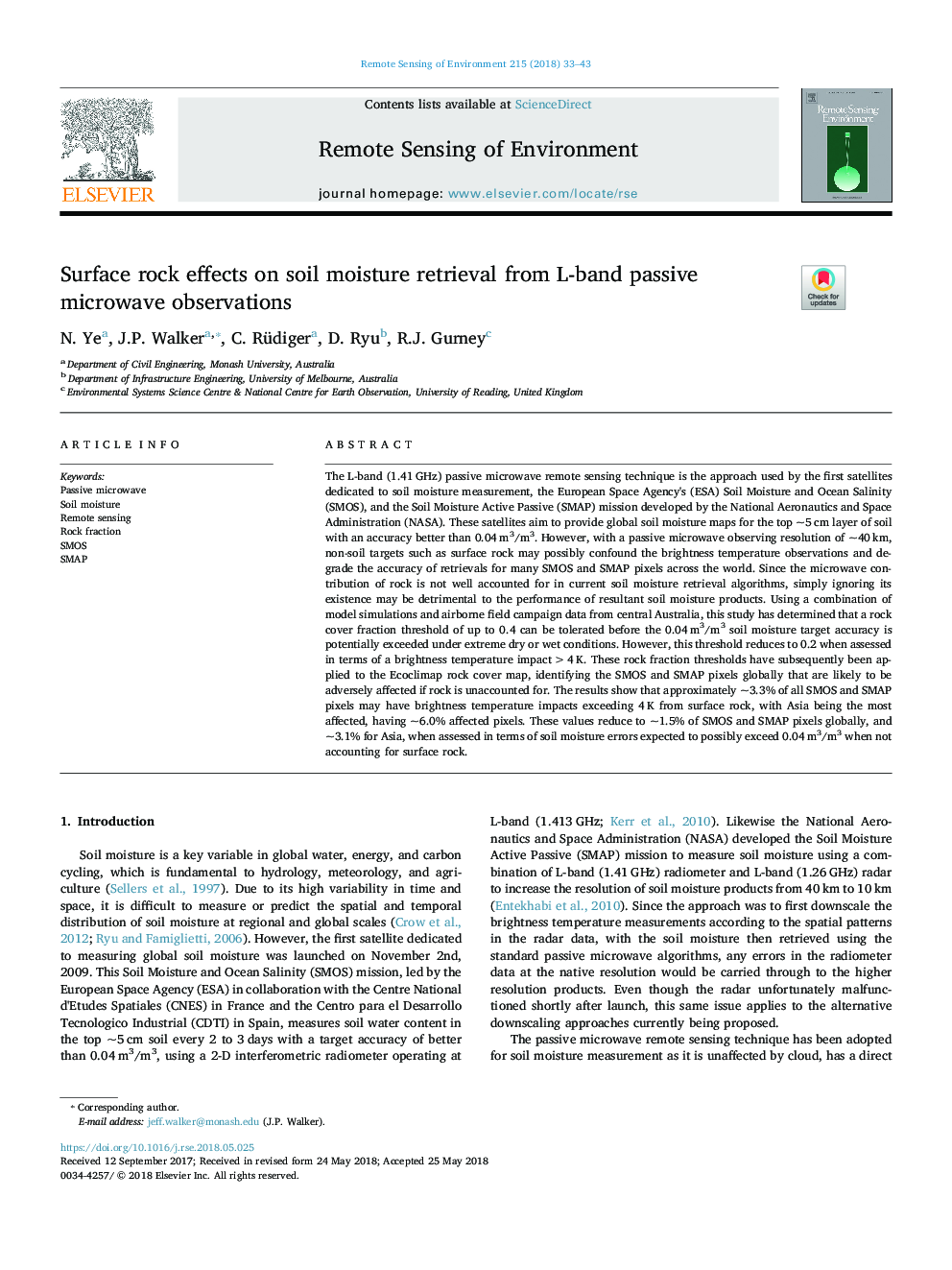| کد مقاله | کد نشریه | سال انتشار | مقاله انگلیسی | نسخه تمام متن |
|---|---|---|---|---|
| 8866459 | 1621185 | 2018 | 11 صفحه PDF | دانلود رایگان |
عنوان انگلیسی مقاله ISI
Surface rock effects on soil moisture retrieval from L-band passive microwave observations
ترجمه فارسی عنوان
اثرات سنگ های سطحی بر بازیابی رطوبت خاک از مشاهدات مایکروویو منفعل باند ل
دانلود مقاله + سفارش ترجمه
دانلود مقاله ISI انگلیسی
رایگان برای ایرانیان
کلمات کلیدی
موضوعات مرتبط
مهندسی و علوم پایه
علوم زمین و سیارات
کامپیوتر در علوم زمین
چکیده انگلیسی
The L-band (1.41â¯GHz) passive microwave remote sensing technique is the approach used by the first satellites dedicated to soil moisture measurement, the European Space Agency's (ESA) Soil Moisture and Ocean Salinity (SMOS), and the Soil Moisture Active Passive (SMAP) mission developed by the National Aeronautics and Space Administration (NASA). These satellites aim to provide global soil moisture maps for the top ~5â¯cm layer of soil with an accuracy better than 0.04â¯m3/m3. However, with a passive microwave observing resolution of ~40â¯km, non-soil targets such as surface rock may possibly confound the brightness temperature observations and degrade the accuracy of retrievals for many SMOS and SMAP pixels across the world. Since the microwave contribution of rock is not well accounted for in current soil moisture retrieval algorithms, simply ignoring its existence may be detrimental to the performance of resultant soil moisture products. Using a combination of model simulations and airborne field campaign data from central Australia, this study has determined that a rock cover fraction threshold of up to 0.4 can be tolerated before the 0.04â¯m3/m3 soil moisture target accuracy is potentially exceeded under extreme dry or wet conditions. However, this threshold reduces to 0.2 when assessed in terms of a brightness temperature impact >4â¯K. These rock fraction thresholds have subsequently been applied to the Ecoclimap rock cover map, identifying the SMOS and SMAP pixels globally that are likely to be adversely affected if rock is unaccounted for. The results show that approximately ~3.3% of all SMOS and SMAP pixels may have brightness temperature impacts exceeding 4â¯K from surface rock, with Asia being the most affected, having ~6.0% affected pixels. These values reduce to ~1.5% of SMOS and SMAP pixels globally, and ~3.1% for Asia, when assessed in terms of soil moisture errors expected to possibly exceed 0.04â¯m3/m3 when not accounting for surface rock.
ناشر
Database: Elsevier - ScienceDirect (ساینس دایرکت)
Journal: Remote Sensing of Environment - Volume 215, 15 September 2018, Pages 33-43
Journal: Remote Sensing of Environment - Volume 215, 15 September 2018, Pages 33-43
نویسندگان
N. Ye, J.P. Walker, C. Rüdiger, D. Ryu, R.J. Gurney,
